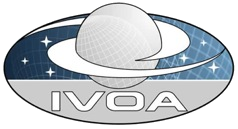The Virtual Observatory (VO) is an international research data infrastructure in Astronomy and Astrophysics. Spelled out, this means it
-
defines standards for finding, accessing, using, and describing data ranging from catalogues to images to cubes to complex datasets packaging measurements, calibrators, simulation data, derived data products or whatever else is necessary for research at the limits of the instruments.
-
brings together about 50 data centres worldwide adhering to these standards, which includes many major players like the CDS, NASA, ESA, CADC, and many others.
-
joins the efforts of the authors of client software, libraries, educational material, web portals, or science platforms, which all cooperate to make data-intensive research in astronomy a pleasure. Or, well, at least possible.
In 2025, this translates into some 30'000 “resources” (ranging from a catalogue of a few entries to huge data collections like, say, the CADC’s data holdings), which serve hundreds of millions of data sets (e.g., images or spectra) and hundreds of billions of catalogue entries.
Most of the resources are immediately accessible for anyone. To learn how to do that, have a look at what Tools have VO support built in or how to do your first steps.
To build and maintain the VO, in the early 2000s several research organisations formed the International Virtual Observatory Alliance (IVOA), which debates and agrees the technical standards that are needed to make the VO possible. If you have suggestions for how to evolve the VO or provide other input, your first contact should be the member organisation next to you. But your input is also welcome directly with the IVOA’s Working and Interest Groups.



